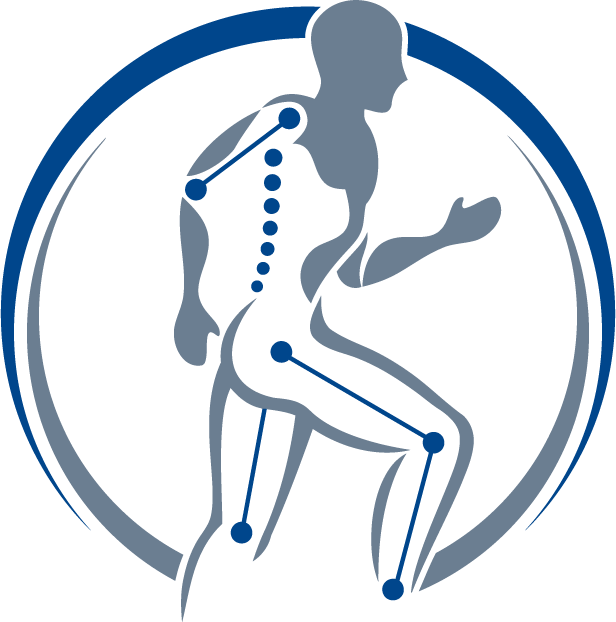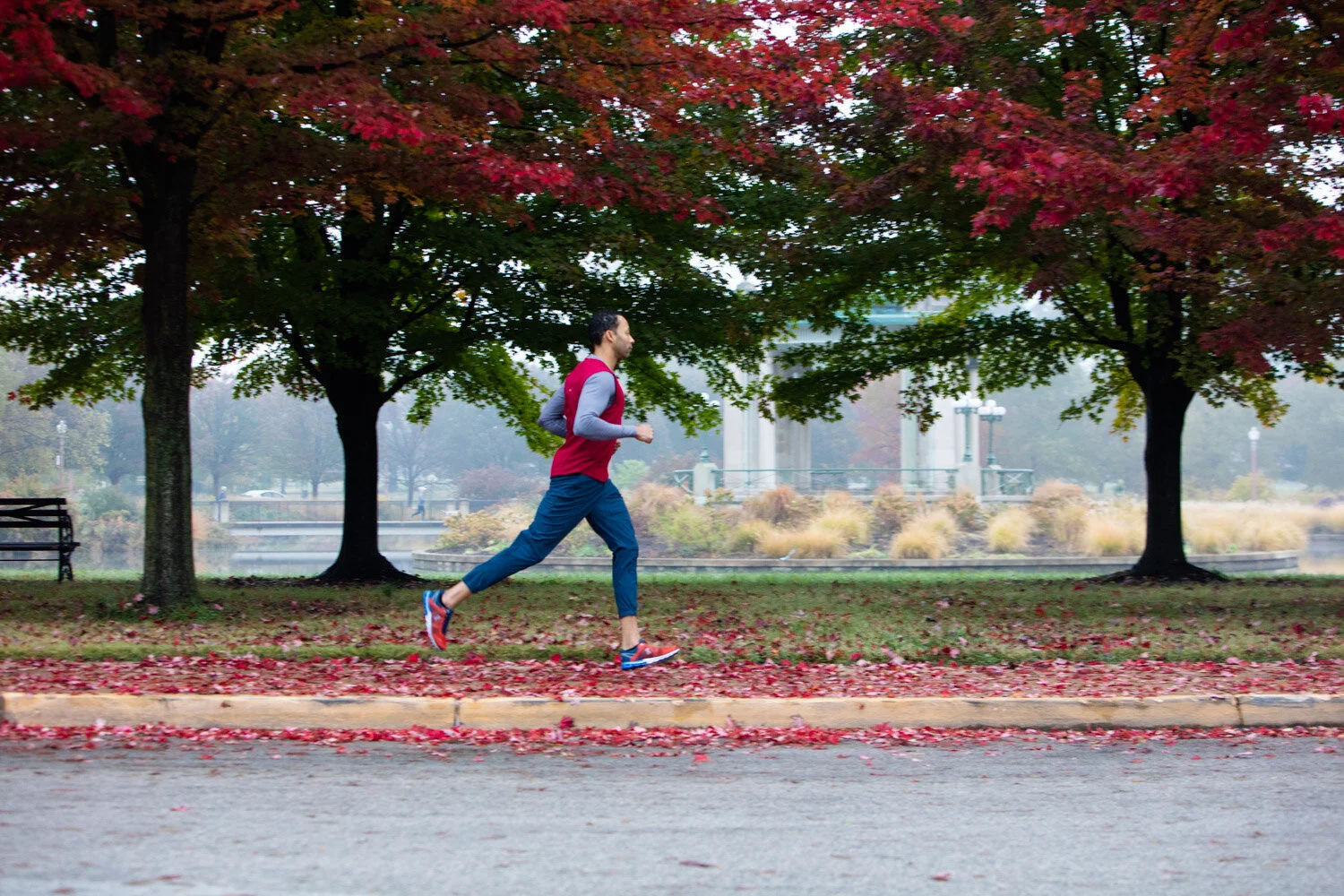Running Biomechanics: Cadence
Think back to the last time you stepped off a ledge expecting the ground to be closer than it was. Your foot and knee anticipated the ground at one distance but were straightened and stiff in the moment when your foot actually hit the ground. Consequently, the rather uncomfortable force of this unexpected impact moved up from your foot through your leg and to the rest of your body. In the field of biomechanics, we call this force moving through your body ground reaction force.
To see ground reaction force at work, jump with two legs while trying to land as softly and quietly as possible. Next, jump with two legs trying to land in a way that makes a loud noise. Can you feel the difference in forces at your knees, ankles and hips? In both cases you controlled your body weight during the landing but you used different parts of your body when absorbing the force of the jump. In the quiet landing you used your muscles to absorb the force while in the loud landing you shifted some of that force to your bones instead. The loud landing had a higher peak ground reaction force in comparison.
Injuries in running are often closely tied to how much force your joints or soft tissues have to manage and absorb with each step. One simple way to decrease the peak ground reaction forces at work during running is to use cadence to your advantage. Cadence is the number of steps you take per minute. When you increase your running cadence while keeping your overall speed the same, research shows that there is a decrease in ground reaction force. Increasing cadence without changing running speed has also been shown to improve hip and knee motion during loading and the initial foot strike position.
So, how do we go about changing running cadence? First, you need to determine what your current cadence is. One of the easiest ways to figure this out is to count the number of steps you take while running in one minute. You could also do this same exercise for only thirty seconds and then multiply the resulting count number by two for similar results.
Once you have determined your cadence, you can begin to increase your cadence little by little to the ideal cadence, generally considered to be 180 steps per minute. We like to see above 172. So, for example, if you currently have a running cadence of 140 you would not want to increase to 180 all at once. Instead, research shows us that you can begin to see changes in running mechanics by making only a 5 to 10% increase in your running cadence. In this example, then, you would want to increase your cadence by 7 to 14 steps per minute each week. Your body can adapt to these more incremental changes per week and doing so will help set you up for long-term running health. If you already have a running cadence of 180 or higher, increasing your cadence may not be productive for your running. All that being said, if you do decide to ramp up your cadence, always tune in to your body to make sure that what you are doing feels comfortable for you.
To derive benefit from an increase in cadence it is imperative that you keep your speed the same. This means that in the beginning you will have to take a shorter stride. That is to say that you will want to cover less distance with each step than you usually do. It is often easiest to learn a new cadence when running on the treadmill because you are able to manually select your speed. You can use a metronome and place it near you to try to match the beat. If you don’t have a spare metronome laying around, you can choose from the many metronome apps available out there for a variety of devices. My personal favorite for iPhone users is the free Metro Timer app.
If you don’t have access to a treadmill, the next best way to train yourself to run with a new cadence is to begin by running in place to the beat of your desired cadence using a metronome. When doing this, think about lifting your feet off the ground on the beat, or you can think about setting your arm swing to the beat too. Either of these methods will keep you from stepping down on the beat. This is something that we try to avoid as it can result in stomping, which can create running problems of its own.
Once you have reached your new cadence when running in place, try running forward at a slow speed while keeping your cadence the same. In order to run faster (your usual speed) you will adjust your stride length. One strategy that I use to make sure that I am using my desired cadence is by running to the beat for one minute every five to ten minutes during a long run. Another way to help keep you on your cadence is to set your running play list to a specific cadence. You can do this on Spotify, or by using an application like RockMyRun.
When you first start to change your running cadence you may notice that you feel more fatigued and that’s normal! It is good to know, though, that over the long term most athletes report that they become more efficient at the new cadence and run faster as a result. Of course, not every person will have the same results when increasing his or her running cadence. Talking with your coach about your speed and/or event goals can help you determine if a change in cadence is right for you.
From a physical therapy perspective, it is important to keep in mind that increasing speed to meet a new cadence is the most common problem we see in changing running cadence and should be avoided. We recommend correcting cadence only to decrease the force experienced at your joints and the joint pain that can come hand in hand with this while running.
I hope you have a happy and joint-pain-free run today! As a final reminder, only make changes to your running that feel good. Never make a running change that feels painful in your body. If you would like more physics-based detail regarding this topic, let me know!
- Ann Crowe, PT, DPT, MS
This blog is not intended as medical or professional advice. The information provided is for educational purposes only and is not intended to serve as medical or physical therapy advice to any individual. Any exercise has potential to cause injury or pain if it is incorrectly done or is not the right exercise for an individual’s medical or physical problems. You should consult with a physical therapist or medical provider for individualized advice.

